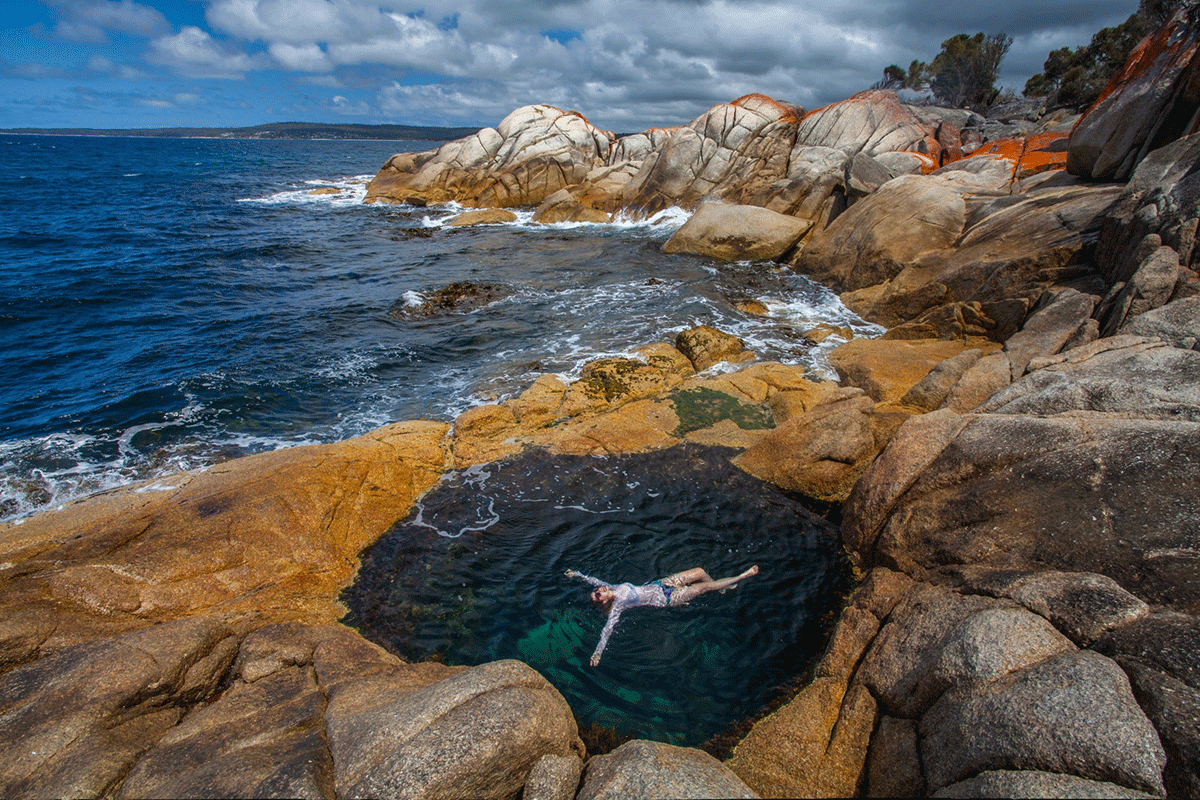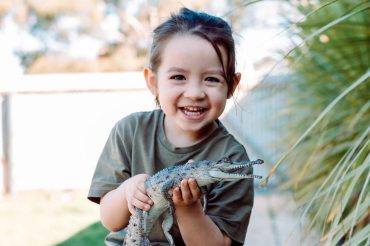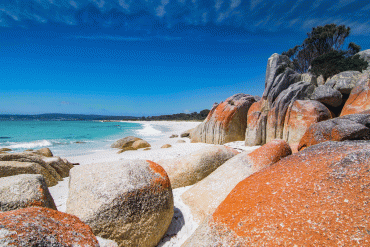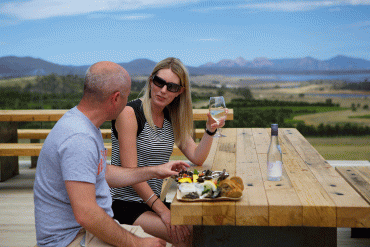No doubt you have heard of the iconic Wineglass Bay and also The Bay of Fires – these are certainly two spots that certainly put East Coast Tasmania on the map. You’ve probably got a million and one insta-worthy photos that you never get sick of reminiscing over. And of course, a trip to the East Coast isn’t complete without exploring the exquisite and unique Maria Island to get up close and personal with the island’s infamous blonde wombats.
But there are hidden gems up and down our coastline that you may not explored before. Typically not listed in the tourism brochures, these are a must-add to your next East Coast Tassie itinerary.
BEACHES
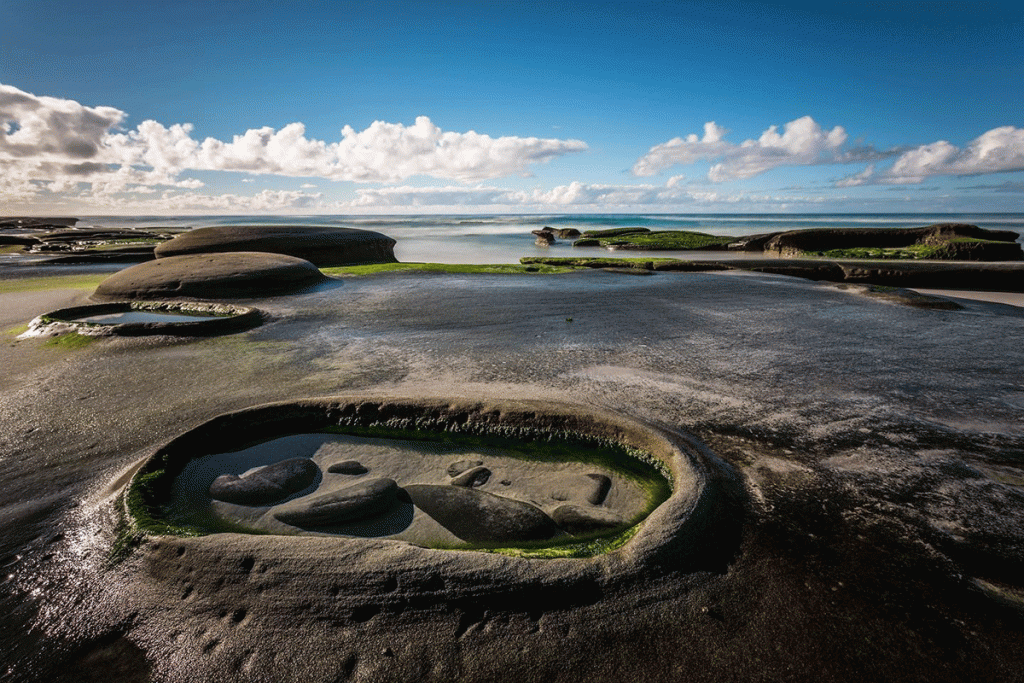
The Porches. Credit: @aaronjrs81
Denison Beach and the Porches
Denison Beach just north of Bicheno has three car parks each offering lovely walks on the beach. The middle car park is next to the Denison Rivulet and provides the most car parking and easy access to the beach. From here it is about a 40-minute walk North to the Porches. These sandstone rock formations hang down from the cliffs resembling porches. The other rock formations to watch out for are in the water and only revealed at low tide. They are constantly changing and are quite remarkable in shape with some being perfectly round. Some are even big enough to sit in on a warm day. Denison Beach is unpatrolled so take care when swimming.
Cressy Beach
About 5km south of Swansea, on the Great Eastern Drive, look for the signs to Cressy Beach and pull off the highway into the little circular car park and picnic area here.
A short stroll along the sandy walking trail leads to the 500-metre-long beach, part of a small coastal reserve. This beach has a different character to Spiky Beach, with a long stretch of sugary sand to stroll along, fantastic views of the Freycinet coast and ocean that can roll small, but surfable, waves onto the beach. This is a wonderful spot to take a longer walk and do some beachcombing or unfurl a towel and watch the sea birds soaring over the water.
Boltons Beach
You don’t have to be a keen surfer or fisherman to love Boltons Beach. It’s an East Coast secluded gem just north of Triabunna and Orford. The aqua blue outlook, tranquillity of the location and having 4km + of clean, white beach to wander will entice you.
Rheban Beach
A beautiful beach and one of the best spots for beachcombing with thousands of shells washed up. The little-known Rheban Beach is just 12km south-east of Orford. It’s a great walk along the beach, and around the corner to Earlham Lagoon, with pretty special views of Maria Island. The scenery is simply spectacular.
Bagots Point
Bagots Point is a nature reserve at the end of the road to Dolphin Sands. Boat launching from the sand, fishing and incredible beach walks are all on the to do list here. Swimming when the tide is in is reasonably safe for young children, but care must be taken as the tide goes out due to strong currents. There are amazing views of the Hazards from the point and Dolphin Sands. Sunrises here are also stunning.
Mermaid Pool
Sitting just above hightide mark, the Mermaid pool is located in the Bay of Fires near Sloop Reef Camping ground. Drive all the way to the end of the road and you will find a bush track leading to the mermaid pool. A popular spot with the locals, the mermaid pool is approximately 3metres deep and crystal clear, the ideal spot for a dip or a snorkel.
THINGS TO SEE AND DO
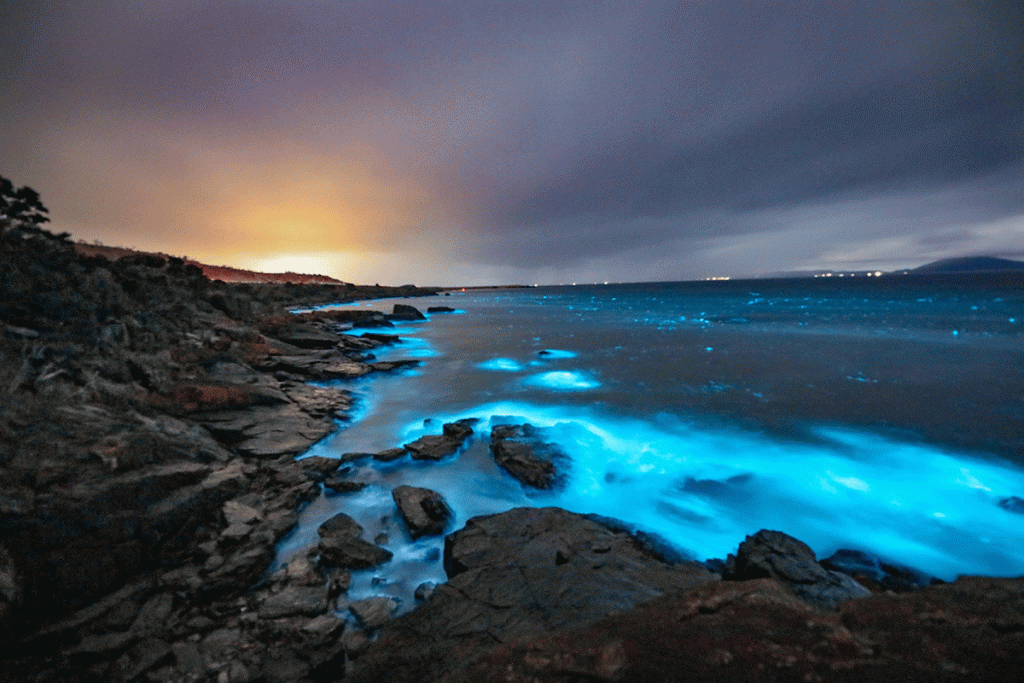
Spiky Beach. Credit: Jamie Buchanan
Bioluminescence
Summer is generally the best time to see the bioluminescence, which is commonly generated by a plankton called Noctiluca scintillans, known as “sea sparkle”. This microscopic organism produces flashes of light in response to physical disturbances as waves break on the shore, or when a stone is thrown into the bloom. Best places so far have been Waubs Beach and Redbill Beach at Bicheno. Another place it has been seen is Coles Bay, especially Honeymoon Bay. This is not a regular occurrence but an amazing sight to see if you are in the right place at the right time and not seen by many.
The Rocking Rock, Bicheno
The Rocking Rock is an 80-tonne piece of granite which nature has accidentally balanced so that it rocks backwards and forwards with the movement of the tide. Located right next to the famous Bicheno Blowhole.
Diving
Diving and exploring Tasmania is a diver’s dream. The best diving in Tasmania is on the East Coast where visibility ranges from 10 to 40 metres depending on the time of the year.
Apart from the unique marine life the Tasmanian coastline is littered with historic shipwreck sites that date back to as early as 1779. Some of the wrecks have not been fully explored.
Moulting Bay Campground and Day parking area
Situated between St Helens and Binalong Bay is the Moulting Bay Campground and Day Parking area. It’s a great holiday spot for families, popular for birdwatching, fishing, walks and other fun water activities. A great fishing spot with a kayak or from the shore. From the day parking area, a track leads along the edge to a creek with a bridge crossing. The easy wide track climbs gently and leads over the hills to Dora Point. At a junction, the right or southern track follows the coast to Humbug Point. It is mostly a sandy pleasant track. From Humbug Point a track continues along the western shore dropping to a beach then back to the bush for the final leg.
The Tasmanian Bushland Garden is a special reserve and display garden featuring the native flora of south-east Tasmania. It is located beside the Tasman Highway 4 km south of Buckland and approximately 50 km north-east of Hobart – about one hour’s drive. The gardens are open every day except Christmas Day, during daylight hours, and entry is free.
The reserve comprises some 20 ha of natural bushland, with walking tracks leading to a central hilltop lookout and a pleasant creek valley, and about 1.5 ha of landscaped display gardens.
Facilities include a picnic shelter, public toilets, picnic tables, an electric barbecue, walking tracks, children’s playground area, and a sealed car park. A popular focal point is a landscaped quarry with a waterfall and pond.
Gemstone Fossicking with Secret River Tours
Mark offers both Kayak fishing adventures as well as fossicking adventures… did you know you can find sapphires and topaz around the North East? He rarely has someone come home empty handed. He is a very knowledgeable and fun guy!
HISTORY, MUSEUMS, ARTS AND CULTURE

Lisdillon Saltworks. Credit: Tasmanian Parks and Wildlife Service.
St Marys Cranks and Tinkerers
Maybe all museums where there are active volunteers should be called “cranks and tinkerers”. Certainly, the museum at St Marys makes no apologies and are happy to declare their interest in “a display of interesting things from 50-year-old cars, motor bikes, buggies, model planes and boats, bottles, books, cameras and the list goes on and the building is full of wonderful objects.” It is located at the Old St Marys Railway Station.
Coalminers’ Heritage Wall
Located at Cornwall, 7 km north-west of St Marys, this wall commemorates the miners who helped to make the Fingal Valley one of Tasmania’s richest and most productive mining areas during the 19th century. The wall recalls the coal miners (many from Cornwall) who tunnelled into the Mt. Nicholas Range with only a pick, shovel and a stick of dynamite and helped create an industry that would make the Fingal Valley prosperous for a hundred and twenty-four years.
Morris’ General Store Swansea
The Morris Store provides a display of items associated with the history of the shop, which was built in 1868. It remains operating in its original purpose, a general store.
Lisdillon Saltworks at Little Swanport
Nestled on a secluded beach at Little Swanport near Swansea the remains of the Lisdillon Saltworks mark a significant part of Tasmania’s industrial heritage, taking its name from the estate where the Saltworks were established. The Saltworks were established by James Radcliff using convict labour in the late 1830s and while only in operation for a short time, they were technically advanced and well-constructed – so much so, that the site is one of only two remaining early salt manufacture works in eastern Australia where substantial ruins can still be found.
TOWNS TO EXPLORE
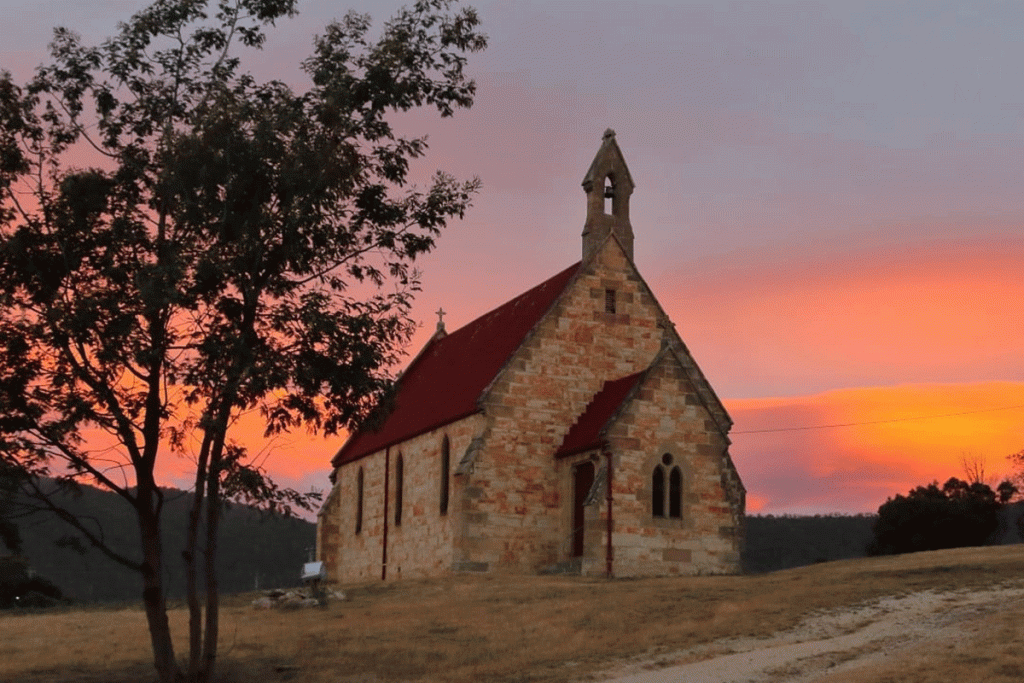
Saint Joseph’s Catholic Church, Fingal. Credit: @bwn_shotz
Buckland
Travelling south to north along the East Coast, Buckland is where the magic starts. First settled in 1820, it was originally known as Prosser Plains. Once a busy timber mill town, now it’s a place to experience convict history and enjoy the gentle pace of rural Tasmania with stunning views and wide-open spaces. Immerse yourself in the town’s rich history, visit the wonderful little Roman Catholic church established in 1883, and enjoy a cold Tasmanian beer at the historic Buckland Inn.
Fingal
Fingal is one of those small Tasmanian towns where the charm lies in simply stopping and walking along the main street. There are a number of Victorian-era buildings and a quiet peacefulness. To the north are the Mathinna Falls and the Evercreech Forest Reserves. The noted poet, James McAuley lived in the area and wrote romantically about “The blonding summer grasses / The stubble-fields, the green, / The sheep in pools in shadow, / Mauve thistledown between.” in his poem ‘Fingal Valley’. A reminder that the ambience of the district is decidedly Northern European.
Scamander
A popular holiday town and its beaches are ideal for swimming, surfing and fishing. The Scamander River is noted for its bream, while beach fishing and game fishing in the deep waters offshore are also popular. Scamander is also northern Tasmania’s major surfing centre.
